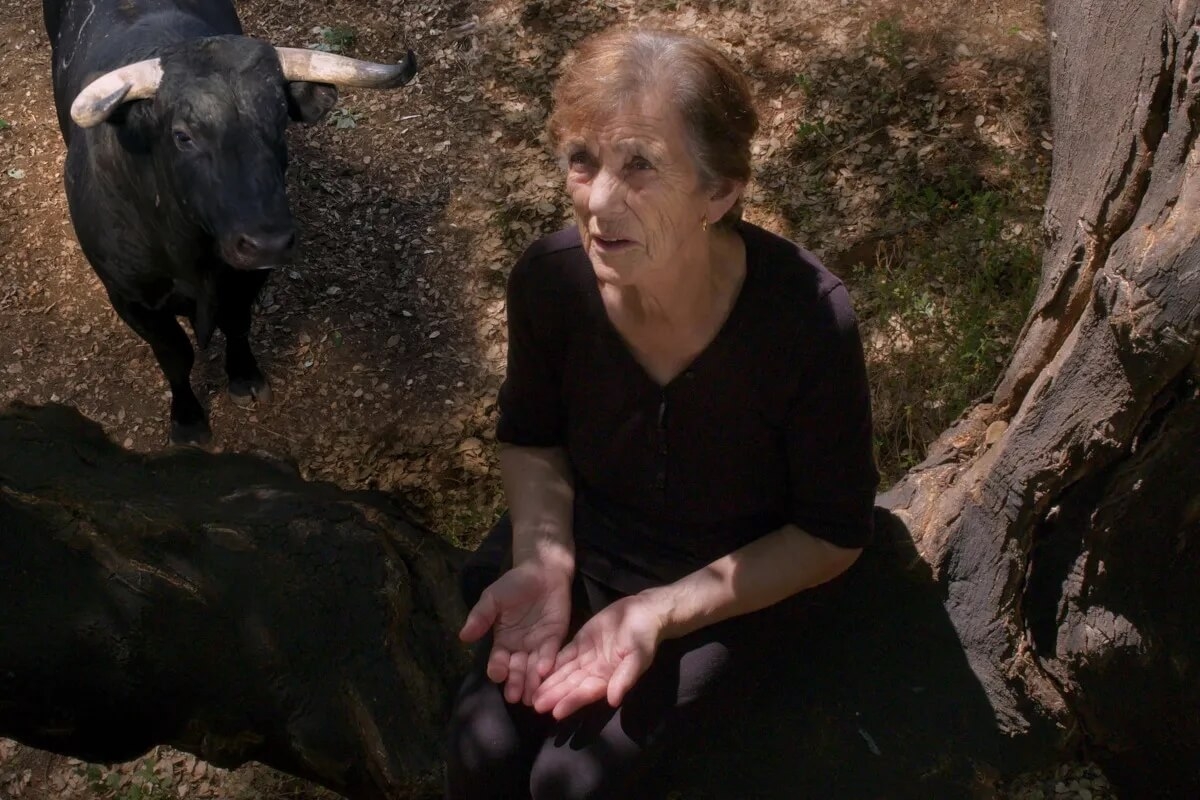The 62nd New York Film Festival kicked off September 27 with Nickel Boys, RaMell Ross’ adaptation of Colson Whitehead’s Pulitzer Prize-winning 2019 novel. What followed on the main slate was one heavy hitter after another: U.S. premieres of The Room Next Door, Spanish auteur Pedro Almodóvar’s latest, Brady Corbet’s Oscar frontrunner The Brutalist, Paul Schrader’s Oh, Canada, and Hard Truths, a new film directed by Mike Leigh starring the incomparable Marianne Jean-Baptiste; the North American premiere of Oscar-winner Steve McQueen’s World War 2 drama Blitz; director Sean Baker’s Palme d’Or winner Anora.
Even more big guns are found in the Spotlight section: the U.S. premieres of Luca Guadagnino’s Queer, which could earn star and former Bond Daniel Craig a Best Actor Oscar nomination, and new films by Leos Carax (It’s Not Me) and Walter Salles (I’m Still Here); Cannes-favorite musical Emilia Pérez; a new film co-directed by the singular Guy Maddin, Rumours; some new bits and bobs from Jean-Luc Godard (RIP).
All sure to be crowd pleasers — and many destined for New York arthouses and multiplexes before the year is out. Which is why my festival card is filled by more off-path stuff, like what’s in the Currents lineup. Here you can find interesting new voices and out-there films, plus four programs of shorts, which are always worth a deeper look. It’s the more experimental side of the festival — or, at least, the most indie. It’s where you go to be challenged and surprised.
One film that did just that was Fire of Wind, the debut feature from Portuguese filmmaker Marta Mateus. In a brisk 72 minutes, Mateus conjures a meditation on Portugal’s authoritarian past and exploitative present where time, experience, and memory are fluid and overlapping. By turns stark and dreamy, the film is so laden with symbolism that those not immersed in Portuguese history need a cheat sheet. But we’re never too at sea. The images are so beautiful, the faces so recognizable, the stories so familiar, that there is a kind of universal language — simplistic and broken, perhaps — that makes the film accessible through a side door.
That was my way in, anyway. And I was locked in from the first minutes, where we’re in the fields with workers picking bunches of grapes in the Alentejo region in southern Portugal. They’re hot, stooped, overworked and undernourished. When it’s time to rest, they head into a cool forest where they’re soon chased into the trees by a runaway bull that may or may not have been loosed on them by a boss frustrated by their productivity.
With nothing else to do, they tell stories and share memories: of husbands lost to colonial wars; of working to bring down the dictatorship of António de Oliveira Salazar; of mothers; of children; of false hopes and broken dreams. Mateus shoots everyone in the laborer group in a way that conveys ultimate dignity. They’re sweaty and dirty but lounge in the trees like royalty. When they talk, they’re eloquent and heroic. They recall Depression-era documentary photographs taken by Dorothea Lange and Walker Evans and the social realist cinema of Sergei Eisenstein and Mikhail Kalatozov. It’s easy to get lost in these images, particularly as the film progresses and crawls deeper into Portugal’s history and subconscious. These are faces we know and experiences we understand.
But even without grasping what the real meaning of this or that story is, the point is clear that the past is never past and that the present is always the future. A soldier in World War I military attire seeps from from a recollection into the now to escort a young woman through time. The grape pickers watch from the trees as the boss sends in giant machines to do their jobs. Are they living in the before? Are they witnessing what’s to come? Are they alive? Dead? Is the forest a real place to eat lunch between shifts or some spiritual waystation on a different journey? Was there ever really a bull?
I’m not entirely sure. What I do know, though, is that layers of Fire of Wind only revealed themselves days after viewing it. None of them put me closer to understanding Portugal’s social experience or Mateus’ commentary on it. But I don’t find that problematic. The film is aesthetically gorgeous, sure, but the metaphysical ideas misting through the film are what I keep coming back to. How do we exist in active conversation with the past? How do we act today to ensure a better tomorrow? Who are the people and what are the struggles that shape who we are? And how do we engage with them, share them, keep them close to us? In a time of exponential technological advancement, generative artificial intelligence, increasing social isolation, and decreasing engagement with history, those questions become provocations.
Such a challenge makes watching Fire of Wind an expansive experience, albeit at times disorienting. You also learn a bit about a nation we tend not to hear much about. And it pairs well with another film screening in New York, though not at the festival, this month.
Twittering Soul, playing at Anthology Film Archives October 26-31, is a 70-minute 3D film set in late 19th century Lithuania directed by Lithuanian artist Deimantas Narkevičius. It’s more straightforward than Fire of Wind, though the comparison is relative. Here, we get a fairly conventionally-staged series of episodes following the daughter of a wealthy landowner, a couple of earthy pagan women, and two itinerant musicians. But there is just as much symbolism, if not more, in Twittering Soul. And it seems more central to the overarching narrative: one of the pagan women is bitten by a snake, slowly dies, and floats into the heavens.
From the press notes, I learned that much of what’s in the film is based on Lithuanian folk tales and, indeed, much of the film has that kind of fable-like quality. This is certainly aided by the 3D, which adds a layer of unreality to the proceedings. And more often than not, Narkevičius uses it well. The extra dimension builds out what are often closed-in spaces in often clever ways, like a shot through a corridor of doorways that makes a mansion look far bigger than it likely was and recalls the Orson Welles’ famous wall of mirrors shot from Citizen Kane. Narkevičius also positions his camera high and away while his characters are low and separated, which has the effect of making people look toy-like and landscapes look endless. And he creates one of the most beautiful 3D shots I’ve seen in any film: a candle in the foreground illuminating a photo print with the eye of the character viewing the picture visible in the background through the print. That’s the kind of image 3D is made for.
The use of the technology is a cheeky counterpoint to the pastoral nature of Twittering Soul, a nod to the novelty of cinema in the time period the film is set, and a commentary on the concerns about new machines and automation bearing down on society at the end of the 1800s. Some of the characters here are materialistic, others hedonistic, but all are deeply connected to the land and nature. And to folk wisdom and legends. In one scene, a maid tells her charge about the witches who circle a tree outside the window, which is followed by one of the pagan women sucking out the poison from her snake-bit companion’s leg and reciting a witch-like incantation. Later, the maid tells a story about fairies spinning flax, which cuts to a room of women spinning flax. Are the two women witches? Are those spinsters fairies? Maybe. Probably. Does it matter?
Like Fire of Wind, we’re dropped into end-of-the-century Lithuania without a map. And that’s OK. Without knowing much of anything about Lithuanian history or culture, we can experience Twittering Soul more purely, learning about the country through the film while keeping our eyes, ears, and minds open to deeper, more primal insights. Plus, there’s the novelty of seeing a Lithuanian film in 3D — in fact, the first Lithuanian feature to be shot that way. I’m not sure it needed it, but it is a singular film.
And, like Fire of Wind, Twittering Soul gets us thinking: about our place in nature, our beliefs and why we hold them, and the importance of storytelling in making sense of the world and preserving some unique, necessary part of our identity. I guess it could be said that all films are concerned with this. But there’s something about encountering other cultures in such an honest, open way that encourages empathy — and deep engagement with our world and ourselves. And, really, isn’t that what cinema is all about?









